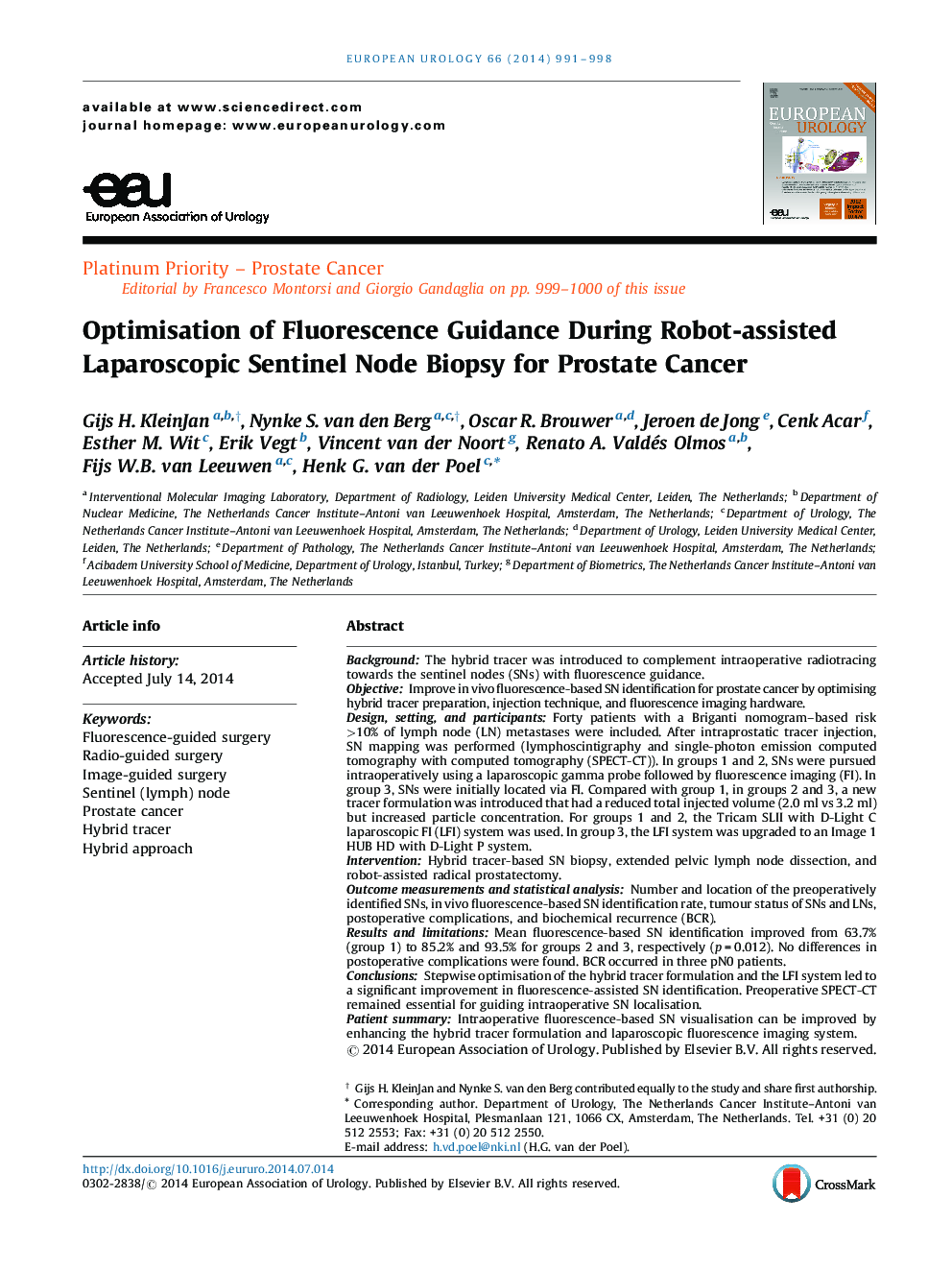| کد مقاله | کد نشریه | سال انتشار | مقاله انگلیسی | نسخه تمام متن |
|---|---|---|---|---|
| 6177860 | 1253114 | 2014 | 8 صفحه PDF | دانلود رایگان |
BackgroundThe hybrid tracer was introduced to complement intraoperative radiotracing towards the sentinel nodes (SNs) with fluorescence guidance.ObjectiveImprove in vivo fluorescence-based SN identification for prostate cancer by optimising hybrid tracer preparation, injection technique, and fluorescence imaging hardware.Design, setting, and participantsForty patients with a Briganti nomogram-based risk >10% of lymph node (LN) metastases were included. After intraprostatic tracer injection, SN mapping was performed (lymphoscintigraphy and single-photon emission computed tomography with computed tomography (SPECT-CT)). In groups 1 and 2, SNs were pursued intraoperatively using a laparoscopic gamma probe followed by fluorescence imaging (FI). In group 3, SNs were initially located via FI. Compared with group 1, in groups 2 and 3, a new tracer formulation was introduced that had a reduced total injected volume (2.0 ml vs 3.2 ml) but increased particle concentration. For groups 1 and 2, the Tricam SLII with D-Light C laparoscopic FI (LFI) system was used. In group 3, the LFI system was upgraded to an Image 1 HUB HD with D-Light P system.InterventionHybrid tracer-based SN biopsy, extended pelvic lymph node dissection, and robot-assisted radical prostatectomy.Outcome measurements and statistical analysisNumber and location of the preoperatively identified SNs, in vivo fluorescence-based SN identification rate, tumour status of SNs and LNs, postoperative complications, and biochemical recurrence (BCR).Results and limitationsMean fluorescence-based SN identification improved from 63.7% (group 1) to 85.2% and 93.5% for groups 2 and 3, respectively (p = 0.012). No differences in postoperative complications were found. BCR occurred in three pN0 patients.ConclusionsStepwise optimisation of the hybrid tracer formulation and the LFI system led to a significant improvement in fluorescence-assisted SN identification. Preoperative SPECT-CT remained essential for guiding intraoperative SN localisation.Patient summaryIntraoperative fluorescence-based SN visualisation can be improved by enhancing the hybrid tracer formulation and laparoscopic fluorescence imaging system.
Journal: European Urology - Volume 66, Issue 6, December 2014, Pages 991-998
